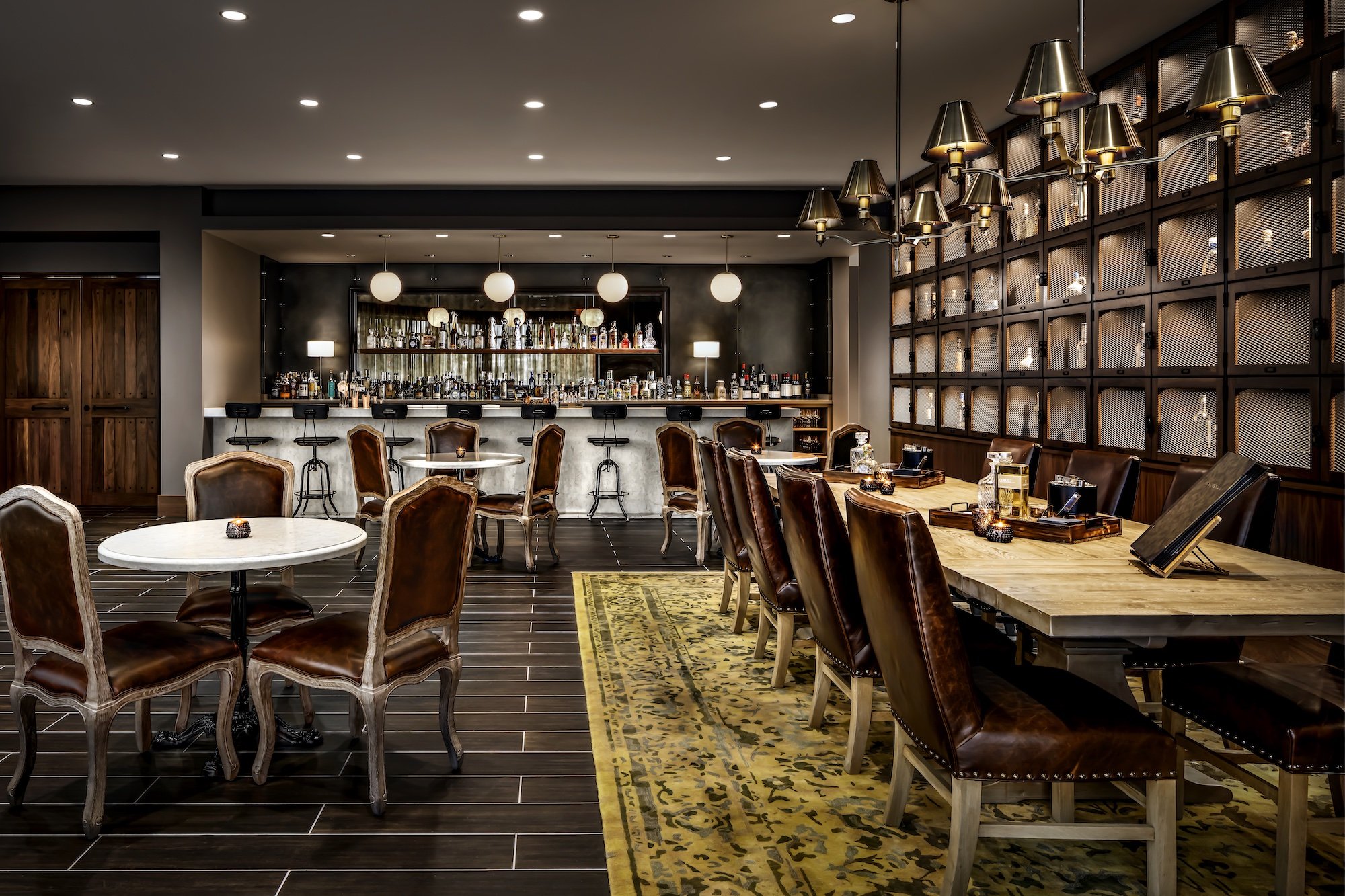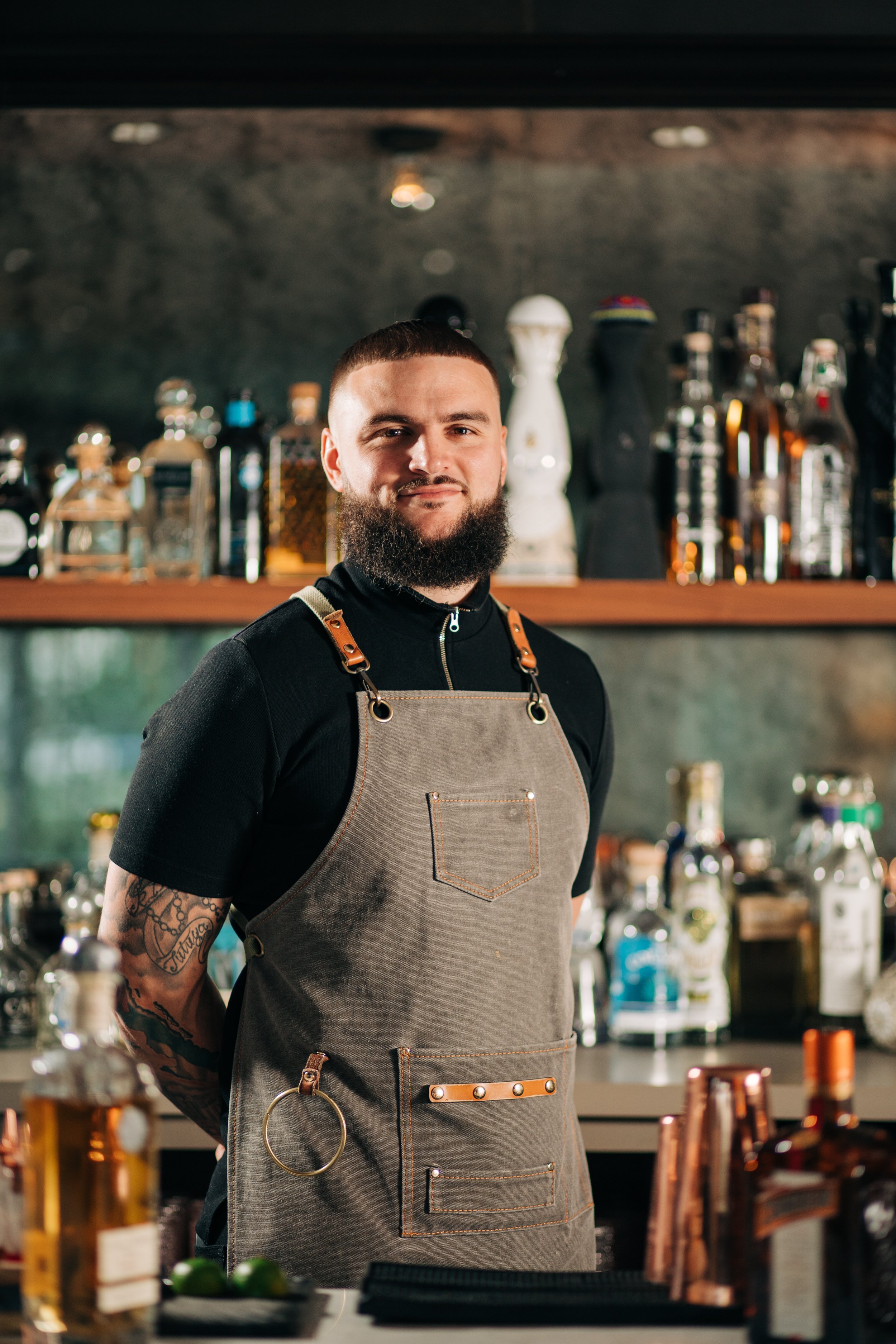How Guests Are Schooled in Fine Agave Appreciation at a Hidden Bar
When guests enter TORO, a Latin-inspired kitchen attached to the hotel Le Meridien Dania Beach, it feels as though they should step quietly. Hanging reading lamps, chairs meant for a good book, and rows of shelves have the feel of a library. But the shelves are in fact tequila lockers, which house bottles that frequent visitors had purchased at La Biblioteca—the bar’s name, which, in Spanish, translates to the library.
Cataloged behind the bartender are nearly 400 bottles of tequila and mezcal, (along with a single Mexican whiskey). And the man with the Dewey Decimal System in his head is Daniel Salgado.
Inked with as many words and pictures as most kids’ books, Salgado learned his craft a decade ago in a bar in Astoria, Queens. While he’d been hired back then knowing little more than the proportions for a rum and coke, he understood immediately that his non-English-speaking barback could have tended bar at the top establishments in the city if he’d only spoken the language. Salgado, who is of Cuban descent and ran hurdles for Florida State’s track team, spoke Spanish and understood the importance of good coaching. From that barback, he learned much of his craft in Astoria.
“Where’s the tequila menu?” the couple next to me at La Biblioteca asked.
“No menu,” Salgado said, though happy hour does feature a menu with a few of his cocktail creations like an Oaxacan old fashioned or the spicy El Pepino. “Let’s just have fun with it.”
The woman asked for a Don Julio; the man Casamigos.
“I typically don’t do those,” Salgado said with a smile, though the familiar bottles were just over his shoulder. “What do you like to drink? Give me some adjectives.”
Daniel Salgado serving cocktail photo credit Le Méridien Hotels & Resorts
Crafting a Tequila Experience
Salgado understands that most people have had one of two experiences with tequila: they either drank it in college and could summarize the night with the t-shirt—One tequila, two tequila, three tequila, floor—or they enjoy the drink now, but only know what the marketers who work for George Clooney, The Rock, and MJ are pushing.
If guests have “PTSD,” as Salgado puts it, from drinking bad tequila in college, he starts them off with an equally bad shot.
“I get the shot out of the way,” Salgado says counterintuitively. “We go from that memory to drinking real tequila.”
From there, the education begins. He discusses with guests what it takes for the agave plant to reach full maturity (about 8 to 16 years), how corners are cut (by most of the famous brands), and how the aging process works.
When another lady walked into La Biblioteca and ordered a reposado with orange and soda water, Salgado asked if he could pour her Arte Nom—one of his favorites—but then give her the orange and soda water on the side. She agreed, enjoyed his recommendation, and never touched the fruit or soda.
Additive-Free Tequilas
The best books and bottles are sometimes the ones the experts keep to themselves. But Salgado stands at his reference desk, shouting out his favorite tequilas and mezcals, which are often additive-free. Typically, these are produced by distillers who grow agave to maturity and refuse to rush their tequilas out of barrels. As such, they have less capital to throw at marketing.
Many well-known tequila companies, on the other hand, use additives, often to hide deficiencies from the corners proud distillers will not cut.
When a La Biblioteca guest tells Salgado about his preference for whiskey, Salgado pours Casa Del Sol, an additive-free tequila aged in cognac barrels. Gin and vodka drinkers get steered toward additive-free cristalinos.
The man who’d originally wanted the Casamigos, but permitted Salgado to pour him something else, ordered round two. As Salgado poured the next tequila that no one at the bar had ever heard of, the man said, “Danny, I’ve been a bartender for thirty years. You’re teaching me a lot today.”



